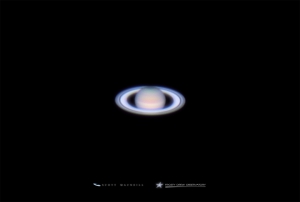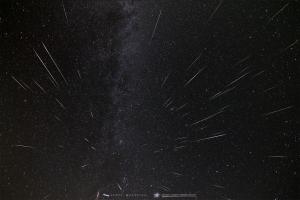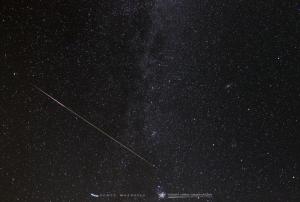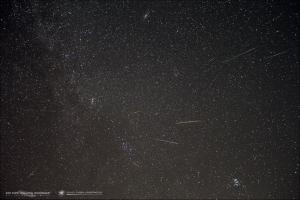
Summer Stargazing Nights
- Where:
- Frosty Drew Observatory
- When:
- Friday July 22, 2016 at 7:30 p.m.
- Cost:
- $1 Suggested Donation per Person
Tonight is Stargazing Night at Frosty Drew Observatory and continuing with the 2016 trend of best-guess weather forecasting, we can expect the potential for clear skies, cloudy skies, showers, heavy rain, hail, fog, severe t-storms; if you can think it, we may get it. Though changing on an hourly basis, the forecast will likely be partly cloudy skies with a chance of severe t-storms. This is rather unfortunate as summer time is a great time to be out under the stars at Frosty Drew. The 92% waning gibbous Moon will rise around 10:00 p.m. giving us a brief glimpse of darker skies as twilight wanes and could offer up fall back views through passing clouds as long as t-storms stay out. The highly variable forecast gives us a nice bout of hope that the skies may pan out for excellent viewing.
We will open the Observatory and Sky Theatre at 7:30 tonight. In the Observatory, telescopes will start on stand by as we monitor the skies. If clear enough and t-storm free, we will direct the primary telescope towards Jupiter, sporting fabulous views of the four Galilean Moons. Once twilight sets in we will swing over to Saturn, showcasing the mesmerizing rings. As long as skies stay somewhat clear and thunder remains inaudible, we will have telescopes on the sky with views of the Moon, binary stars, and possibly a nebula or two before moon rise. In the Sky Theatre we will feature a showcase of celestial objects photographed at Frosty Drew Observatory with a commentary and discussion on general astronomy. We will stay open until either midnight or weather chases us out, whichever comes first. Following us on Twitter (@FrostyDrewOBSY) or Facebook will get you updates from the Observatory helping you make an informed decision.
Overall, tonight’s bright 92% waning gibbous Moon will significantly outshine the Milky Way making viewing of the galaxy non-existent. Add in the threat of t-storms and tonight will be a night to skip if driving a long distance. If you are in the southern Rhode Island area and skies are clear, swing over for a chance at fabulous planetary and Lunar viewing. Our redemption lies in the high degree of variability in the forecast at this point. The trend at Frosty Drew is that whenever we see variability in the forecast, we almost always experience the best case scenario. Even if tonight is a t-storm attack, we still have many summertime Friday nights ahead to revel in the fabulous views of the cosmos, including the sensational Perseid Meteor Shower on Thursday, August 11th and Friday, August 12th. Clouds begone!
-------------------------------------------------------------------------
Weekly Happenings
Scott MacNeill
Remember that amazing meteor shower that happens in August? That is the Perseid Meteor Shower and it started this past week on July 17th, making now the time to start planning where you will be for the August 12-13th shower peak. Meteor activity will continue to increase as we close in on the peak dates with bright meteors becoming very frequent overnight. Add in that the 2016 shower brings with it a nice up-tick in peak period meteor activity, and this year’s shower is set to blow minds. All we need now is clear skies, late night stamina, and loads of enthusiasm to make for a stunning night of shooting stars.
The Perseid shower is a result of Earth passing through a debris field left behind by comet 109P/Swift-Tuttle. Discovered in 1862 by Lewis Swift and Horace Tuttle, comet 109P was identified as the source of the Perseid shower in 1865. The comet has a 133 year orbit around the Sun, making its last visit to the inner solar system in 1992.
Meteor showers are named after the constellation that their meteors appear to radiate from. This is called the “radiant point”. The Perseid shower radiates from the constellation Perseus, visibly about half way between Perseus and Cassiopeia near the naked eye visible Perseus Double Cluster. Since Perseus is rising around sunset, the radiant point will be about 37º above the horizon at 1:00 a.m. on Friday, August 12th and rising higher over the course of the night, eventually passing overhead. This places the radiant point at an excellent place for viewing.
This year we are in for a delayed display of amazement, though when it kicks in, it will be awesome! The delay is because the bright gibbous Moon will be out to start on every night of the peak period. Friday morning and Saturday morning, which are the best times to view, will see the Moon set at 12:37 a.m. and 1:18 a.m. The brightness of the Moon will obscure all but the brightest meteors until about 15 minutes after the Moon sets, which is when the shower will really kick in. We are also seeing a potentially significant increase in the number of meteors streaking overhead, an increase from our regular 80-100 meteors per hour to upwards of 200 meteors per hour! This is because the stream of comet debris we are passing through is particularly dense this year as a result of Jupiter’s gravity pushing particulates into larger groupings along the path Earth takes through the stream.
Viewing the Perseid show is simple pie if your are out after moonset. Grab a reclining lawn chair or a blanket and lay on your back looking towards the zenith (top of the sky). Since the Perseid radiant point is the top of the constellation Perseus, which will rise overhead from the Northeast, orientate your body so your feet are towards the Northeast. Meteors will be frequent and appear to originate from the radiant point.
Frosty Drew Observatory will open all night on Thursday, August 11th and Friday August 12th for the Perseid peak. Starting at sunset, we will offer views of Saturn's rings, and the Moon. Once 11:30 p.m. strikes, we will close the Observatory telescopes and make our way to the Observatory court yard where the Perseid shower will be taking off. We will stay on site until the pre-dawn Sun kicks us out. If weather is favorable, we will likely be on site overnight Saturday as well. During all nights, the Milky Way will be strikingly visible after the Moon sets with meteors shooting by. So stop in during the Perseid Meteor Shower peak and enjoy a fantastic night out under the stars with shooting stars blazing the sky.
-Scott



